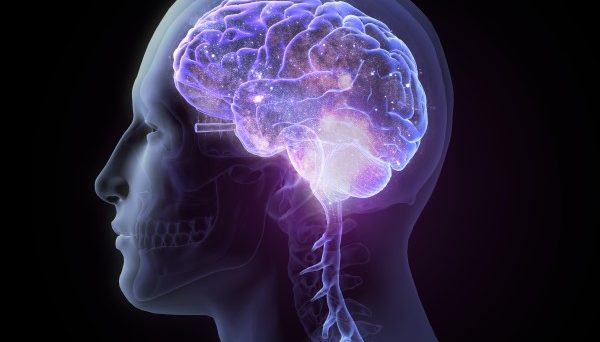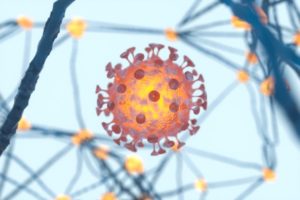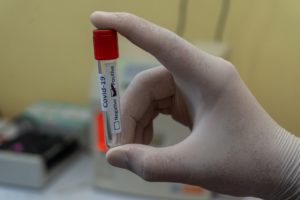
On 11th March 2020 SARS-CoV-2 was declared a pandemic, a virus predominantly affecting the respiratory system. Within months there were also reports of neurological disturbances such as lack of smell and taste, dizziness and headaches. As the virus continued to spread from Wuhan through to neighboring countries and continents there was an increasing prevalence and severity of these neurological and psychiatric cases.
There has been a distinct lack of country-wide surveillance studies on neurological and psychiatric symptoms in COVID-19, with only a handful of case studies and two small population studies in Wuhan and France.
There are many vital questions to answer regarding the neurological and psychiatric effects of COVID. How common are neurological and psychiatric complications in COVID-19 patients? What proportion affects the central versus the peripheral nervous system, and are novel syndromes emerging? And who is at risk?
The CoroNerve Studies group is a collaborative effort seeking to track suspected neurological complications of COVID-19. A paper published late last year aimed to answer some of these questions in a UK cohort.
Collaboration between different clinical neuroscience specialties
To evaluate the cases of neurological and psychiatric symptoms of COVID-19 an online network of rapid-response case reports was developed, with collaborations from various clinical neurosciences specialties headed by the CoroNerve Studies group.

Patients were stratified into a younger (under 60) group and an older (over 60) group, and symptoms were clustered into broader clinical syndromes associated with COVID-19 and classified into case definitions, including ‘Cerebrovascular event (abnormalities of the blood flow in the brain)’, ‘Altered Mental Status’, ‘Peripheral Neurology’, and ‘Encephalitis’.
Members of these professional organizations identified patients exhibiting these syndromes and a swift 5-minute clinical dataset was completed. It contained four critical components: diagnosis of COVID-19, demography, geography, and nature of the clinical syndrome.
What did these collaborative clinical datasets reveal?
153 unique cases meeting the clinical case definitions in the UK were identified. Ages ranged between 23-94 years, with the median age being 71 years. Overall, 49% of cases were notified through BASP, 35% through ABN/CoroNerve.com, and 16% through the RCPsych portal. From 153 cases those without complete clinical datasets were excluded, leaving 125 cases.
Of the whole cohort with complete data (125), 62% (77) presented with a cerebrovascular event and 31% (39) of patients presented with altered mental status, collectively accounting for 93% of neurological and psychiatric disturbances. Within these subsets, encephalopathy and encephalitis accompanied 41% of the patients with altered mental status, and stroke was the most common cerebrovascular event (74%).
96% of the datasets had age demographics. There was a disproportionate number of neuropsychiatric presentations in younger patients (49% [18]) compared to the cerebrovascular events (18% [13]) and a predominance of cerebrovascular complications in the older patients (82% [61]).
The future of the COVID-Clinical Neuroscience Study
This is an early indicator of the link between new acute psychiatric complications in a younger cohort and COVID-19. The unequal number of the older cohort experiencing cerebrovascular complications could be explained by the state of health of the aging brain and the risk factors associated with this, these issues being exacerbated by critical illness.
This study was the first snapshot of the acute neurological and psychiatric complications of adults hospitalized with COVID-19. The MRC-funded COVID-CNS study led by Dr Benedict Michael is the next stage of data collection and is a collaborative effort from over 10 sites around the UK. This study will delve further into two key questions: for whom does COVID-19 cause injury? What specific mechanisms cause this damage?

This in-depth clinical, laboratory, and imaging study will compare COVID-19 patients with neurological/psychiatric complications, a control cohort with COVID-19 with no neurological/psychiatric complications, and another with respiratory problems without COVID-19.
Markers of brain injury, inflammation, and brain scan changes will be assessed in these patients, as well as evaluation of symptoms, signs, and brain function at different timepoints. This will be key to understanding which existing medications to use, such as antiviral drugs, or if new medications need to be developed to treat these neurological effects.
Collaborations are key for a meaningful response
Data sharing and open collaborations are key to facilitate clinical research which has been pertinent for COVID-19 developments. Once this more in-depth study has been conducted, at-risk groups can be more readily identified and mechanistic tests will delve further into the impact of the disease on the central nervous system.
Readiness and collaborations for future pandemics, not just in neurological and psychiatric syndromes, will be the driving force for the fast deployment of strategies to diagnose, contain and eradicate.
Comments